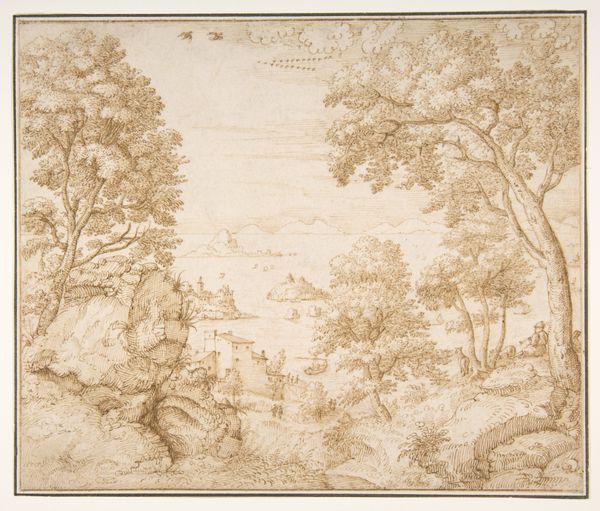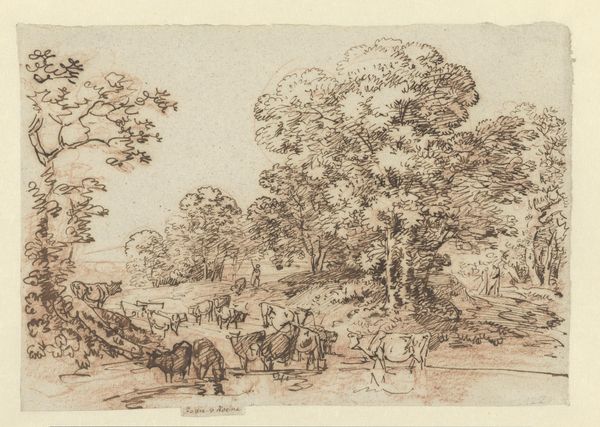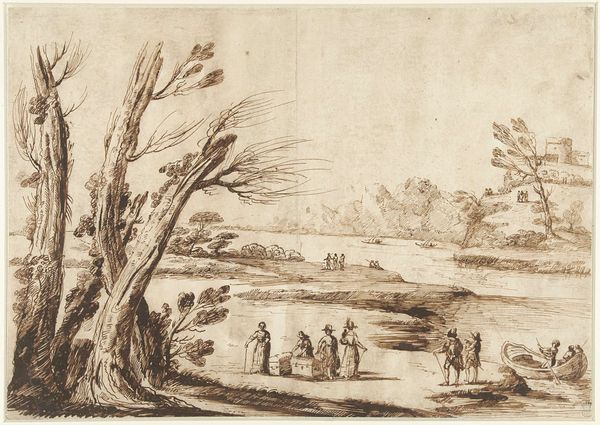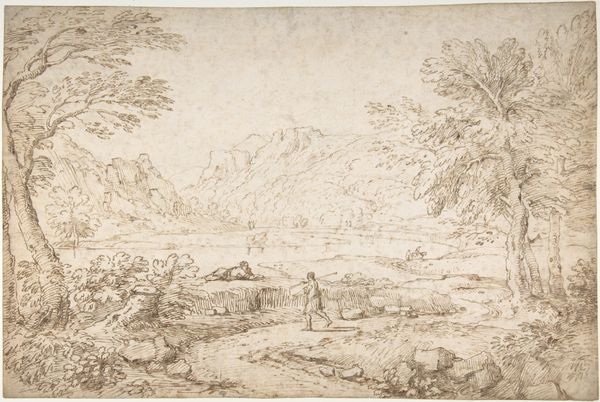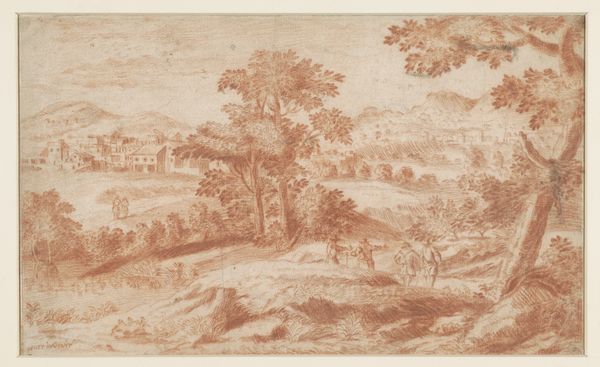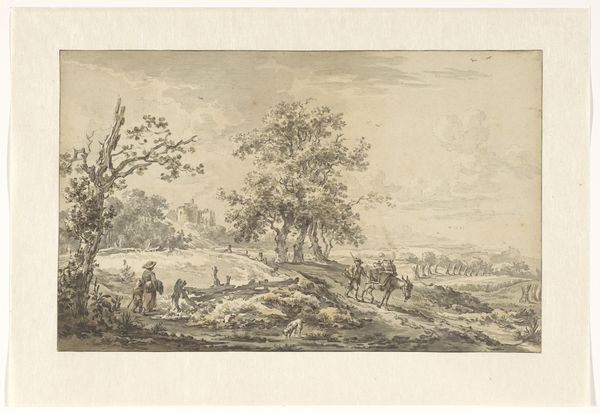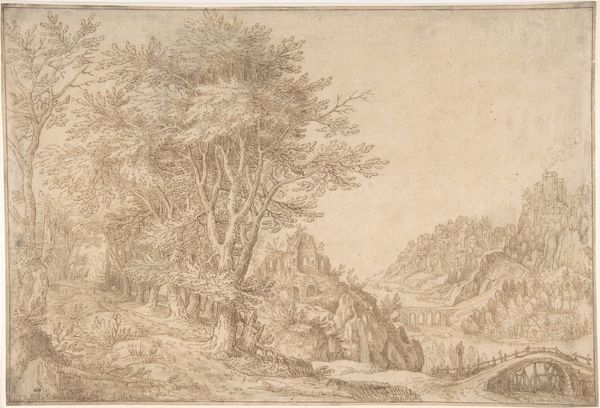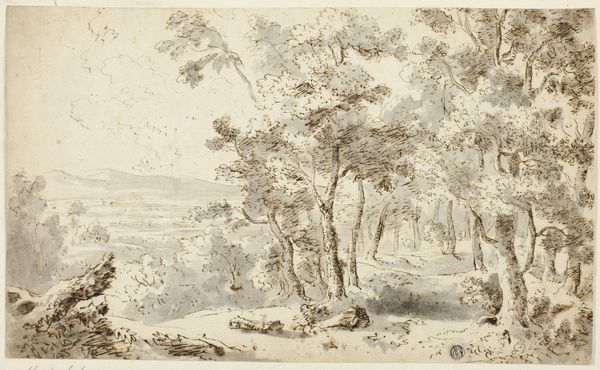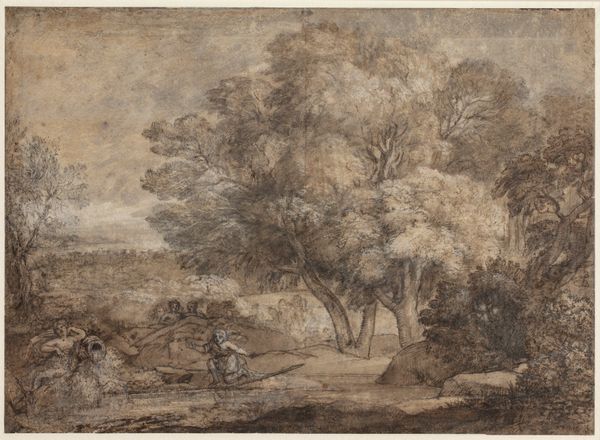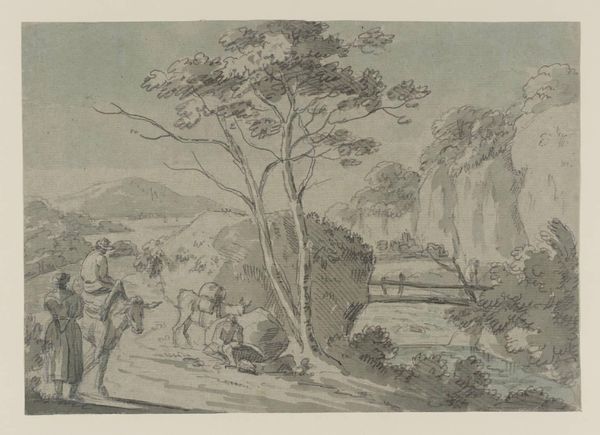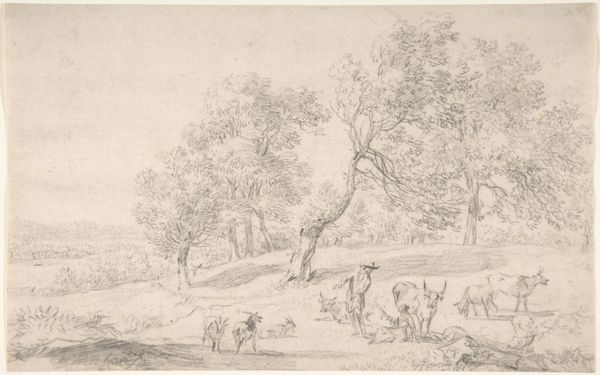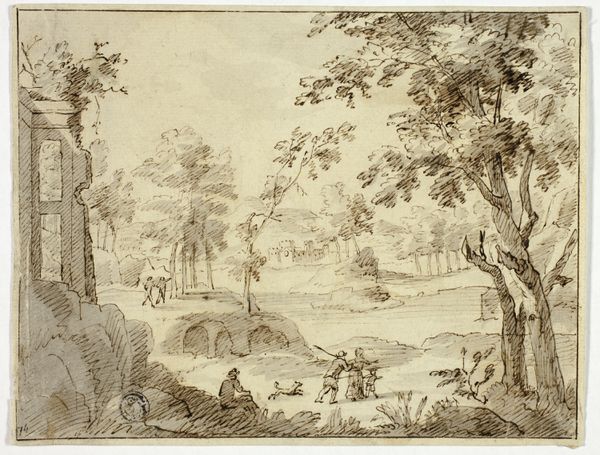
drawing, ink
#
drawing
#
ink painting
#
landscape
#
ink
#
genre-painting
#
northern-renaissance
#
watercolor
#
realism
Copyright: Public Domain
Curator: Immediately, the sepia tones and the density of the lines evoke a feeling of journey, a sense of narrative unfolding. It’s almost cinematic. Editor: Indeed. This ink drawing, "Landscape with a View of Antwerp" by Jan Brueghel the Elder, dates back to 1604. What's remarkable is how Brueghel uses a relatively limited palette to convey such a wealth of detail. The subject provides commentary on Dutch society during the early 17th century. Curator: Precisely. Note the composition: the deliberate positioning of the trees as framing devices. It pulls the viewer's gaze towards the horizon, where the cityscape faintly emerges, establishing a clear visual hierarchy. The use of line, with such fineness, gives real character to the subjects presented here. Editor: Consider Antwerp at this moment, though. Brueghel, son of Pieter Bruegel, the genre painting icon, painted this scene shortly after the devastating consequences of the Siege of Antwerp. Though the city remained, its economic and political power dwindled. A visual testament to that transition. Curator: I see that also through the lines’ varying thickness, particularly in rendering the human figures, creating a textured, almost bustling effect amidst the wide, almost sparse open spaces. Brueghel uses it effectively in this piece, using those small vignettes in contrast with the vast open land between us and the city. Editor: Absolutely. The image operates as both aesthetic object and historical document. It portrays everyday life, but its deeper subject remains the changing world Brueghel knew. A stark reminder that art acts not in a vacuum but as a participant within history itself. Curator: In scrutinizing Brueghel’s methodology, the interplay of precise strokes and open areas—alongside his specific tone of brown—we are given insights not only into an aesthetic paradigm, but also into our modes of seeing. Editor: And seeing Antwerp. It highlights the role of the city during the shifting sands of Northern Renaissance geopolitics. Hopefully, looking more closely allows our visitors the ability to not only view this work but engage more deeply with history and artistry in conversation.
Comments
No comments
Be the first to comment and join the conversation on the ultimate creative platform.

